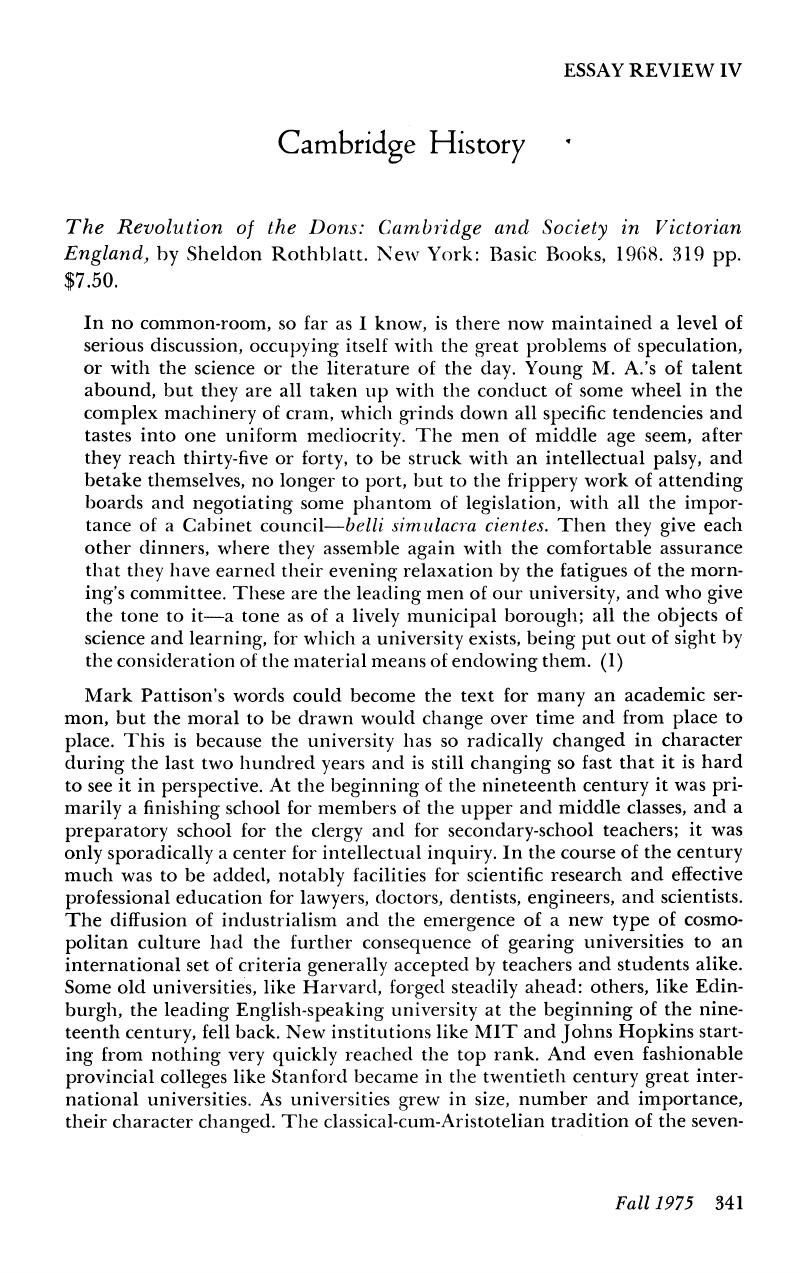No CrossRef data available.
Article contents
Cambridge History
Published online by Cambridge University Press: 24 February 2017
Abstract

- Type
- Essay Review IV
- Information
- Copyright
- Copyright © 1975 by New York University
References
Notes
1. Pattison, Mark, Memoirs, ed. by Pattison, Mrs. (London 1885), pp. 89–90. Pattison was rector of Lincoln College, Oxford, 1861–84. This passage appears to have been written in 1883.Google Scholar
2. The secondary schools were left to set their own standards and turned to the universities rather than to the state for assistance in establishing external examinations that would secure general recognition. See Roach, John, Public Examinations in England, 1850–1900 (Cambridge, 1971).Google Scholar
3. Satthianadhan, S., Four Years in an English University, 2nd edn. (Madras 1893), pp. 52–3.Google Scholar
4. Ibid, p. 56.Google Scholar
5. Jeyes, S. H., ‘Our Gentlemanly Failures’, Fortnightly Review, 67 (March 1897): 387–98.Google Scholar
6. Three vacancies were filled at the Treasury, one at the Home Office, six at the Colonial Office, nine at the India Office, and six at the Civil Service Commission. The same examinations were also used to fill more numerous vacancies in less prestigious offices: two in the Lunacy Commission, three in the Patent Office, twenty-four in the Inland Revenue, fifteen in the Post Office, fourteen in the English and five in the Irish Public Record Offices. Thus there were eighty-eight vacancies in all. Twenty-fifth Report of Her Majesty's Civil Service Commissioners. [C.3066] p. v. H.C. (1881). XXI, 5.Google Scholar
7. Green, V. H. H., Religion at Oxford and Cambridge (London, 1964), p. 365.Google Scholar
8. The Church of England Year Book, 1969, p. 189. The proportion has since risen. In 1971 it was 15.7%.Google Scholar
9. Roach, John, ‘Victorian Universities and the National Intelligentsia’, Victorian Studies, 3 (1959–60): 131–50.Google Scholar
10. Annan, Noel, ‘The Intellectual Aristocracy’, in Plumb, J. H., ed., Studies in Social History: a Tribute to G. M. Trevelyan (London, 1955), pp. 241–87.Google Scholar
11. Stead, W. T., ed., The Last Will and Testament of Cecil John Rhodes (London, 1902), pp.52, 63.Google Scholar
12. Jeyes, , p. 388.Google Scholar
13. Ibid., p. 390.Google Scholar
14. Examinations are set by the university, and colleges are encouraged to regard them as a test of their competitive position.Google Scholar
15. Lawson, F. H., The Oxford Law School, 1850–1965 (Oxford, 1968), passim .Google Scholar




